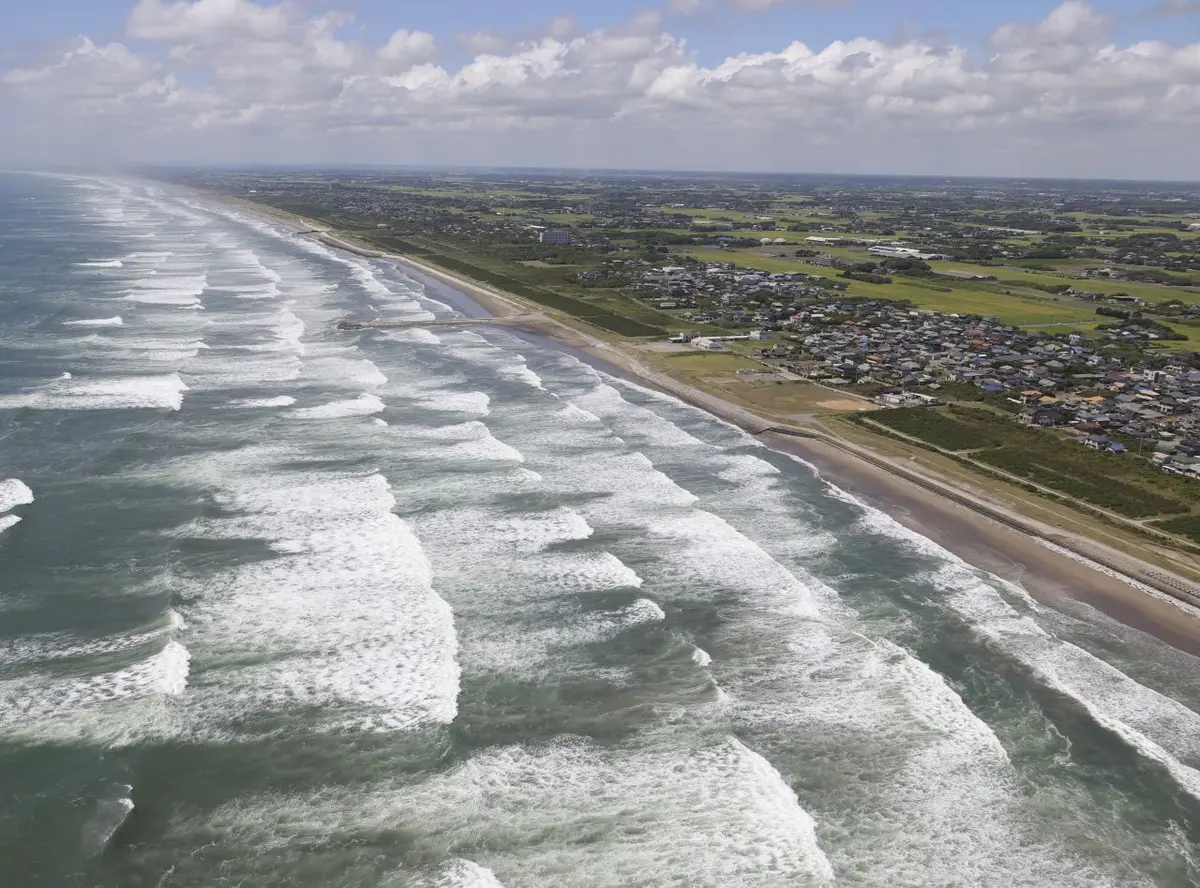A powerful 8.8‑magnitude earthquake off Russia’s Kamchatka Peninsula triggered tsunami warnings and advisories across the Pacific, including California, Hawaii, Alaska, and parts of Japan. Though no major damage has been reported in California, officials issued a tsunami warning for Northern California’s coast, prompting evacuations and heightened alerts along the U.S. West Coast.
Pacific-Wide Alert Tsunami Warning After Russian Megathrust Quake
The earthquake occurred roughly 85 miles east of Petropavlovsk‑Kamchatsky, at a shallow depth of 11–12 miles. It has been ranked among the six strongest ever recorded by the U.S. Geological Survey, with several strong aftershocks following.

Tsunami impacts were immediate in Russia and Japan, with waves reaching 5 meters (16 ft) in Severo‑Kurilsk, forcing rapid evacuations. In Japan, authorities evacuated approximately 900,000 residents from coastal zones. Hawaii reported waves up to 4 feet, while U.S. airlines delayed or canceled flights and evacuation protocols were activated across the islands.

California’s Tsunami Alert Levels
Initially placed under a tsunami watch, California’s alert level was upgraded to a warning for the Northern coast—from Cape Mendocino to the Oregon border, including Crescent City. More southern regions remained under a tsunami advisory, signaling strong currents and hazardous conditions even with wave heights under one foot.
Crescent City, historically prone to tsunami damage, braced for surge waves up to 4–5 feet, particularly around 3:30 a.m., coinciding with high tide. The harbor and low-lying areas were evacuated, and boats were directed offshore. In Monterey and Santa Cruz counties, expected wave heights under one foot nonetheless prompted warnings about strong currents impacting watercraft and boats.
Hawaii’s evacuation began as early tsunami waves struck at 7:17 p.m. local time, disrupting traffic, shutting beaches, and prompting shelter orders statewide. Governor Josh Green warned residents that the initial waves may not be the highest and urged people to remain vigilant until alarms ceased.
On the U.S. mainland, tsunami models forecasted the first significant waves to reach Northern California around midnight–1:00 a.m. PDT, with smaller surges expected further south. Climate experts and local meteorologists emphasized that even minor water movement can be dangerous.
Safety Measures and Public Warnings
The National Weather Service and NOAA issued urgent advisories urging coastal residents to avoid beaches, harbors, rivers, and tide pools. Key advice included:
-
Evacuate low-lying areas and harbors immediately
-
Remain inland until the warning is lifted
-
Heed official alerts and do not return prematurely ([turn0search3], [turn0news18], [turn0news28]).
Local officials in Crescent City established a temporary evacuation center at the VFW Hall and cleared the Lighthouse Cove RV Park. Officials noted that California’s rugged coastline and cliffs can help mitigate wave height threats, though strong currents still pose risks along the water’s edge ([turn0search4]).
This earthquake is the strongest since 2011, reminiscent of past Pacific Rim disasters like the 1952 Severo‑Kurilsk quake and the 1964 Alaska tsunami, which caused serious impacts in Crescent City. Notably, a 2006 Kuril Islands quake generated waves that reached California, though less devastating than 1964.
Experts emphasize that tsunamis often come in multiple waves: the first wave is not necessarily the largest, making extended caution critical for hours after the initial event.
Authorities in California, Hawaii, and across the Pacific continue to monitor seismic activity and sea-level changes. Japanese officials remain on high alert, assessing wave patterns along Hokkaido and eastern coasts. In Hawaii, shelters remain open, and flights resume gradually as the zone clears.
While Northern California remains under active warning, Southern California streets and beaches are largely calm. Residents are instructed to stay off piers, marinas, and low-lying coastlines until the National Weather Service confirms the all-clear.


